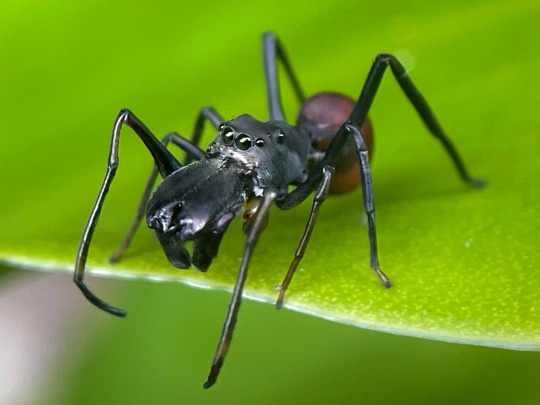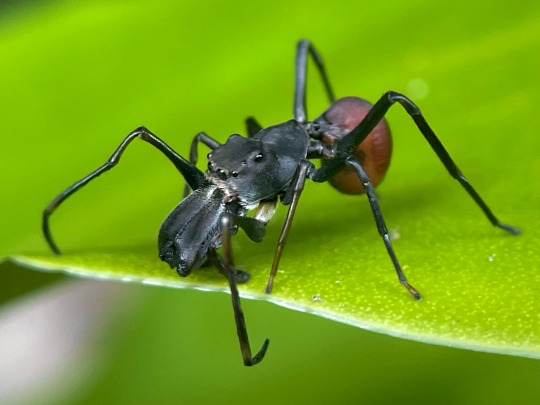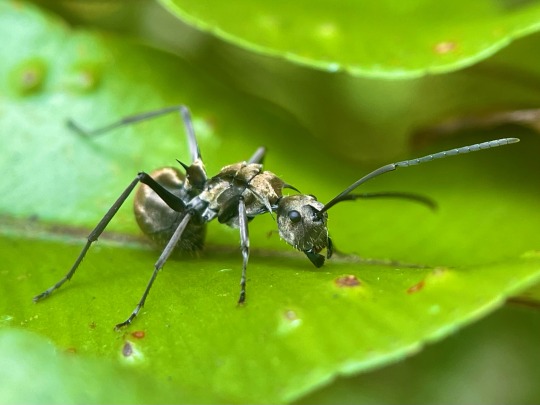Don't wanna be here? Send us removal request.
Text
Poecilotheria regalis (Indian Ornamental Tarantula)
Poecilotheria regalis, commonly known as the Indian Ornamental Tarantula, is a species of tarantula native to India. This species is one of the most beautiful and sought-after tarantulas in the world. Poecilotheria regalis is a large tarantula, with a leg span of up to 10 inches. Its body is a striking silver-gray color, with vibrant yellow and white stripes running along its legs, making it…

View On WordPress
0 notes
Photo










Horned pelican spider, Afrarchaea cornuta, Archaeidae
Pelican spiders, also known as assassin spiders, are a family (Archaeidae) of about 90 tiny (2mm-8mm) species that prey exclusively on other spiders.
Photographed in South Africa by hrodulf
3K notes
·
View notes
Text
spiny, long-legged, and armored, Polyrhachis ants are a common sight in Singapore as they forage for their colonies in a perpetual breakneck sprint. but this creature is no Polyrhachis: this is a jumping spider that looks and moves exactly like one!
he is Toxeus maxillosus*, one of the finest ant mimics I’ve seen.


an elongated first set of legs mime questing antennae while the rest are perfectly sized to match Polyrhachis’ gait. his enlarged chelicerae appear like an ant’s head, and the illusion is completed by pedipalps slung beneath like ant mandibles.
unfortunately I didn’t get a good still photo of the red-rumped Polyrhachis armata that he mimicked. however, a neighboring shrub housed another T. maxillosus who sported a shiny coat of gold hair in the style of Polyrhachis illaudata, a worker of which was also sitting there. side-by side, the mimicry is simply exquisite.


*at least, I think the black and red form is also considered T. maxillosus. the gold-haired form seems to be the most commonly observed type.
4K notes
·
View notes
Text

0 notes
Text
1 note
·
View note